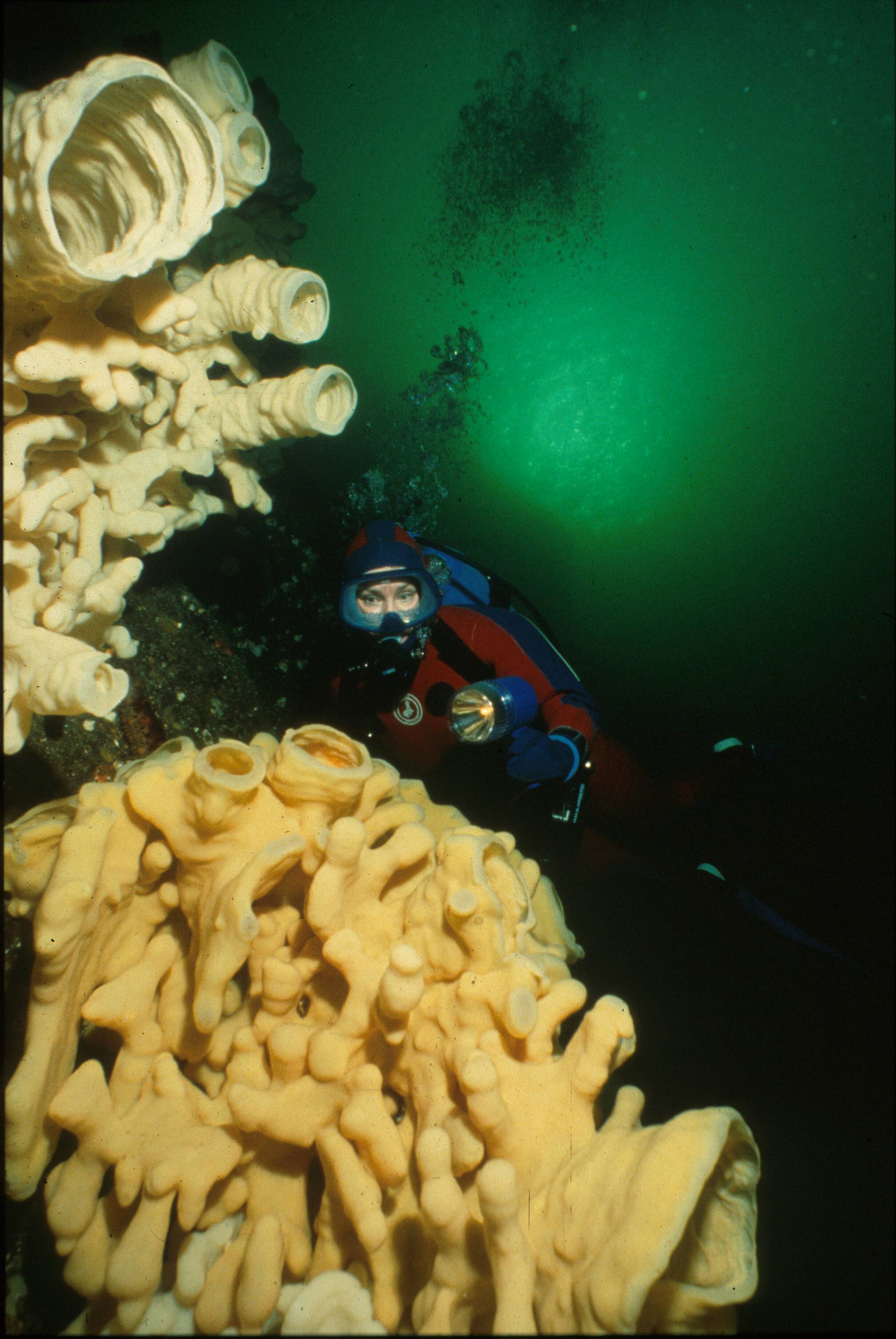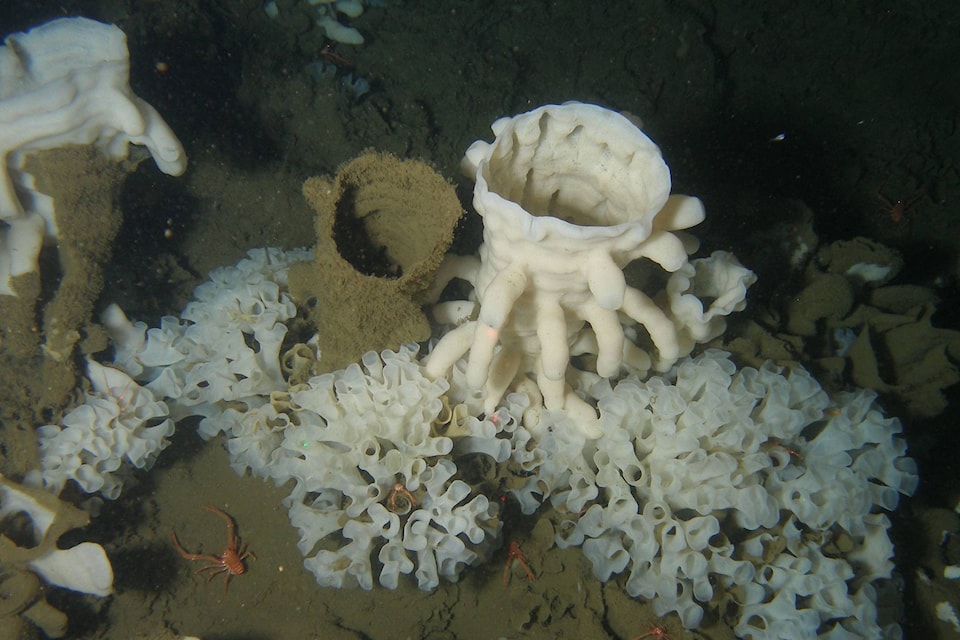The Canadian Parks and Wilderness Society has renewed its call for stronger protections of B.C.’s glass sponge reefs, amid mounting threats from bottom-contact fisheries, climate change and the recent discovery of a dead sponge garden in Howe Sound.
Once thought to be extinct since the Jurassic period, the 25 glass sponge reefs along B.C.’s coast are the planet’s last-known in existence, filtering billions of liters of ocean water daily and providing critical habitat for an array of sealife including prawns, crab and groundfish.
Fisheries and Oceans Canada has designated 17 of reefs in the Georgia Strait and Howe Sound as marine refuges and imposed various fishing closures and restrictions.
Last spring the department confirmed the existence of six more reefs in Howe Sound (one of which was dead), but have yet to extend any protections against fishing activities.
The B.C. chapter of CPAWS says DFO needs to act.
“If we don’t move on this fast enough…we don’t want fishing events, like prawn traps being dropped on glass sponge,” CPAWS-BC ocean campaigner Carlo Acuña said. “Right now if these events do happen there’s no legal recourse to get them to stop, or have them to pay for any damage.”
READ MORE:
He added incidents involving protected reefs last month have elevated the urgency.
Between July 2 and 4 DFO seized about 300 prawn traps originating from one commercial vessel within the Sechelt Glass Sponge Reef Closure. During the investigation officers discovered and seized an additional 250-300 traps in the area along with 400 lbs of live prawns.
Because the investigations are ongoing DFO cannot comment on any potential charges.
In addition to protecting the new southern reefs, CPAWS is asking DFO to extend the buffer zone around those in Hecate Strait, off Haida Gwaii,. The northern reefs are B.C.’s largest, covering 1,000 square-kilometres and reaching eight stories tall. They were given full Marine Protected Area (MPA) designation in 2017, but CPAWS says new research shows extending the buffer from two kilometres to six kilometres is vital to protect the structures from sediment stirred by nearby bottom contact fishing
“By expanding it to six kilometres, it’s actually a really small percentage — I think it’s less than a half per cent of B.C. ocean that’s being taken away, a very very small amount compared to what’s able to be fished,” Acuña said.
READ MORE:
Researchers from the University of Alberta recently discovered a new species of sponge epibionts in the Hecate Strait, strengthening CPAWS’ call for the extension. This so-called demosponge encrusts 20 per cent of the surface of the glass sponge, a number high enough to necessitate further studies into the species’ importance to the reefs.
Meanwhile, a recent UBC found glass sponge mortality is highly susceptible to slight shifts in their environment brought on by ocean acidification and global warming.
In an email to Black Press Media DFO stated existing protections demonstrates the government’s commitment to the health of all glass sponge reefs, but future decisions will be guided by DFO policy and public consultation.
“[It will] take into account conservation objectives, an ecosystem approach, socio-economic considerations, and the views and interests of Indigenous groups, commercial and recreational harvesters, and other interest groups.”




